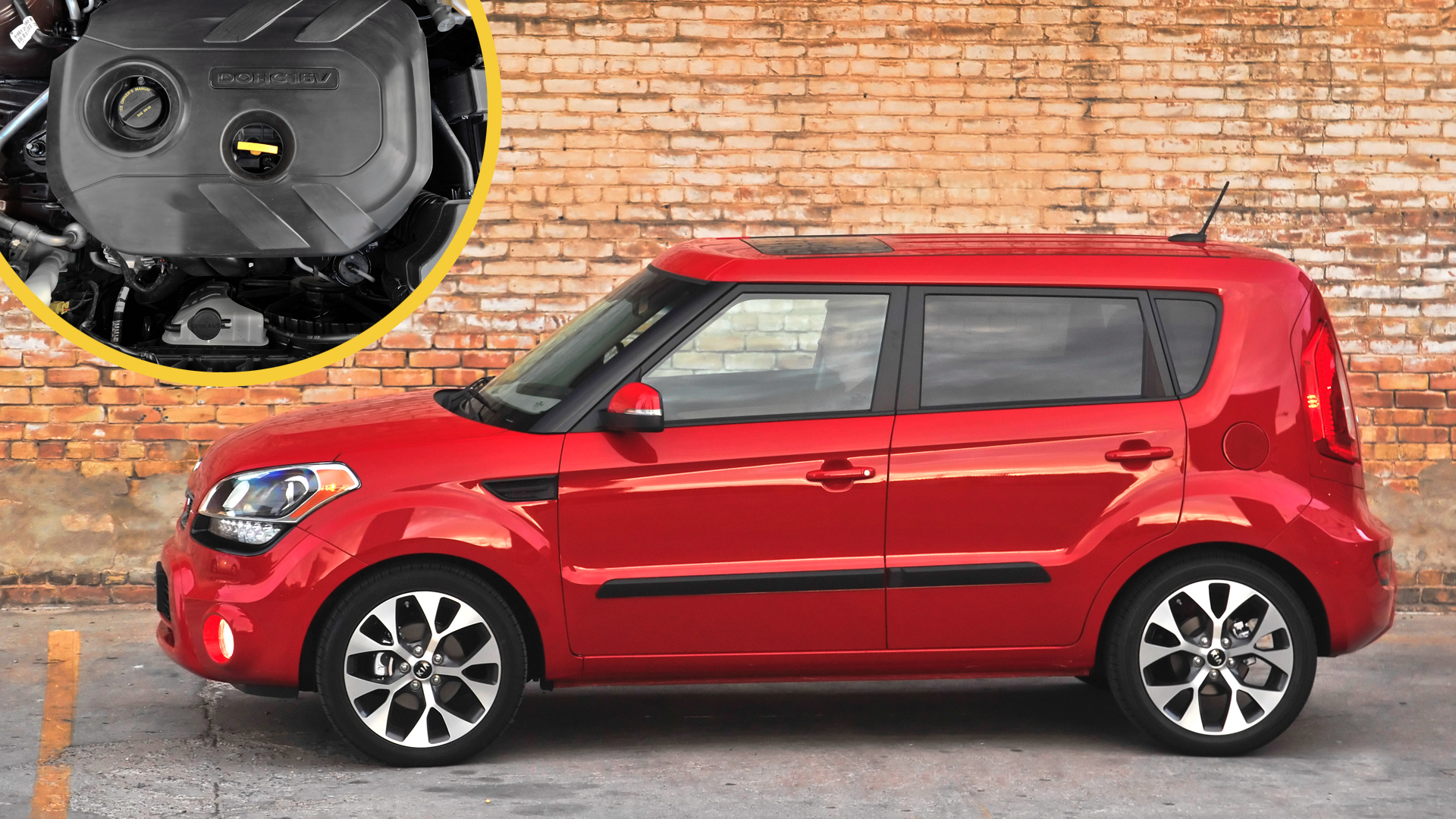

We may earn revenue from the products available on this page and participate in affiliate programs. Learn more ›
Back in the 1980s, it was common for your average family sedans to produce less than 150 horsepower from internal combustion engines that weren’t all that small. I still can’t believe we drove 3.3-liter Pontiac 6000s making maybe 135 horsepower, and that was good.
Since then, an endless list of various types of technological advancements have made engines significantly more efficient and powerful. One piece of tech that’s become ubiquitous is gasoline direct injection, usually called GDI. It’s popularity spread for a variety of positive reasons, but it has drawbacks, too. If you own a car that uses this technology, it’s important to know how it works and what its faults are so you can prevent and/or deal with these issues head on. Here’s what you need to know.
What Is GDI?
Until around 10 years or so ago, most vehicles had port injection. This means that fuel is sprayed in with the air mixture, washes over the valves, and is combusted to create power. In direct-injected engines, the fuel intake is squirted directly into the combustion chamber. The result is a more complete combustion cycle that uses less fuel. Making more power from less fuel allows automakers to use smaller, more efficient engines that still give good performance.
Seems Like a Good Thing, What’s the Problem Here?
Gasoline is caustic, which isn’t always a bad quality. Back in olden times, people used gas to clean dirty metal tools.
In port-injected engines, gas is continuously washing over the intake valves. This has the effect of cleaning off any build-up of carbon, oil, or other contaminants that build up during normal operation. In a direct-injected engine, the backsides of the intake valves stay dry, as no gas is washing over the valves. Oil and carbon deposits are still building on the backside of the valves, but there’s no fuel washing all that crap off.
That carbon build-up can destroy an engine. Intake valves get gummed up with build-up, and then nothing works correctly.
How Do I Know if My Car Has GDI?
Finding out if your car has GDI just by looking at the engine is a bit tricky because there’s nothing really visually obvious that’s unique to them. On your vehicle’s plastic engine cover, there may be a big label with the letters GDI, though. Try checking the vehicle’s owner’s manual.
If all else fails, a call to the dealership’s parts counter should give you an answer if your car is direct-injected or not. Or, you could always just Google “is make/model direct-injected?” and find your way to an official spec sheet.
How Do You Fix It?
Some automakers have noticed this carbon problem and have attempted to engineer it out. Toyota’s new M-series engines found in the latest Camry and Corolla use both direct and port injection to keep the backside of the valves clean. Oil manufacturers have also added solvents and other chemicals in certain brands to help mitigate build-up, too.
But if and when excess build-up occurs, you need to clean it off. Depending on the make and model of car, it could be a fairly involved process. More often than not, it involves the removal of the valve cover and intake manifold. From there, you can media blast the gunk off the back of the valves.
Many people use walnut shells, which are strong enough to scour off the build-up, but soft enough to not damage engine parts. To media blast, a technician will blow highly-compressed air mixed with, in this case, walnut shell pieces into the engine, which scrapes off the build-up. At the same time, they’ll use a vacuum to suck up the excess dust and walnut shell pieces that go flying.
Where Could I Get This Taken Care Of?
Most dealerships or independent mechanics worth their salt will have knowledge about carbon build-up on GDI engines. Some brands are more proactive than others with recommending (or not) services to media blast or remove carbon build-up on valves.
What Happens if You Just Ignore It?
For one, you might see a decline in performance. The intake valves won’t be operating quite right, and your computer will try and compensate for it. In this event, the check engine light will likely turn on.
Eventually, serious damage could occur. A friend of mine’s dad had a 2013 Kia Soul with around 140,000 miles. The car had issues with a random misfire and suffered from generally low performance. A compression test revealed that cylinder one was low, so something was not getting a good seal.
Here’s what the engine looked like:



The car burned an exhaust valve. According to internet message boards and conversations with technicians at the Kia dealership parts desk, this is fairly common for cars that have excessive carbon build-up that has never been cleaned. My friend’s theory is that poorly running engines, especially misfiring ones, tend to run lean, which raises the temperature of combustion dramatically. Eventually, that excess temperature burns engine parts. In this case, a valve.

This could have been avoided with a bit of preventative maintenance. The removal of the intake manifold and media blasting is somewhat more intense than, say, dumping a bottle of “injector cleaner” in the car’s gas tank. You know, like that Lucas stuff the parts store cashiers are always pushing while they ring you up? Still, a bit of media blasting earlier could have saved this engine from a costly valve replacement job.
GDI engines might take a bit more work to maintain their port-injected-only counterparts, but I think it’s worth it. The real-world benefits to both power and economy can’t be underestimated, and there are some great engines on the market now that use this technology.
This article originally published on Car Bibles.